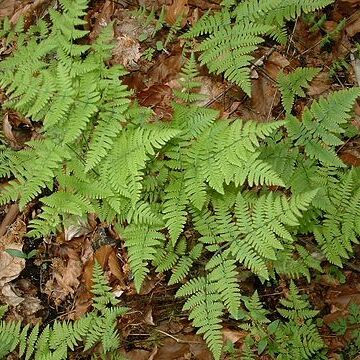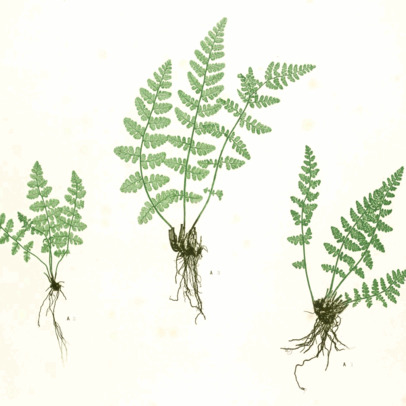Terrestrial ferns. Rhizome erect or creeping, scaly; scales non-clathrate, papery, entire or toothed; teeth sometimes bifid. Fronds erect. Stipe decurrent on the rhizome, scaly. Lamina 1-4-pinnate, sometimes simple and entire, membranous to coriaceous, sometimes proliferous; main rachis and costae grooved on the upper surface, often hairy; veins free or occasionally anastomosing. Sori elongated along the veins, sometimes back to back on each side of a vein, sometimes paired and U-, V-or J-shaped, rarely rounded; indusium linear, shaped similarly to the sorus, occasionally rounded or inflated. Spores bilateral, with a perispore.
Terrestrial with erect or less often creeping rhizome, sometimes forming a short caudex; stipe not articulate (except in Woodsia), often densely scaly particularly near base, with 2 vascular strands united and U-shaped above


